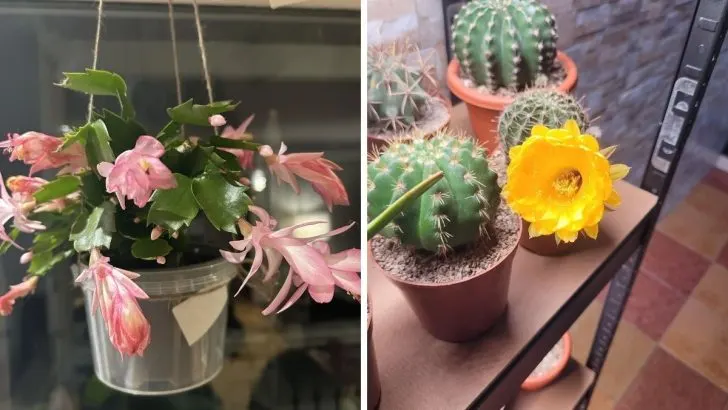Today we will talk about how long can a cactus live without water. This is a topic that interests all those who have or intend to buy cacti.
These plants are interesting because of their ease of maintenance, specific appearance, flowering, and so many types that it is difficult to choose just one cactus for your home.
In addition to this famous question, you will also learn the ultimate care guide for cactus, and together with us, you will perfect your skills for caring for these beautiful house plants.
Finally, we bring you a faq section where we have prepared some interesting details about cactus plants for you. Also the answer to the question how long can flowers go without water.
About Cacti Plants (Succulents Plants)

Cacti species are easy to distinguish from other succulents, and the main difference is that cacti develop areoles, small cushion-like formations from which hairs, spines, and flowers emerge. Succulents appear in more habitats than cacti and belong to 20 plant families.
Grasses, succulents, or succulents owe their leaf and stem structure to the climate they came from, to which they had to adapt to survive. These are long dry periods with little rainfall.
The natural habitats of succulents are semi-arid parts of Africa, Australasia, and Central America, parts of North America and northern Europe, and temperate and cold areas of Asia, while cacti come from the desert parts of the southern USA, South America, and Mexico where precipitation is rare and temperature differences huge.
How Long Can A Cactus Go Without Water? (Life Of A Cactus With No Water)
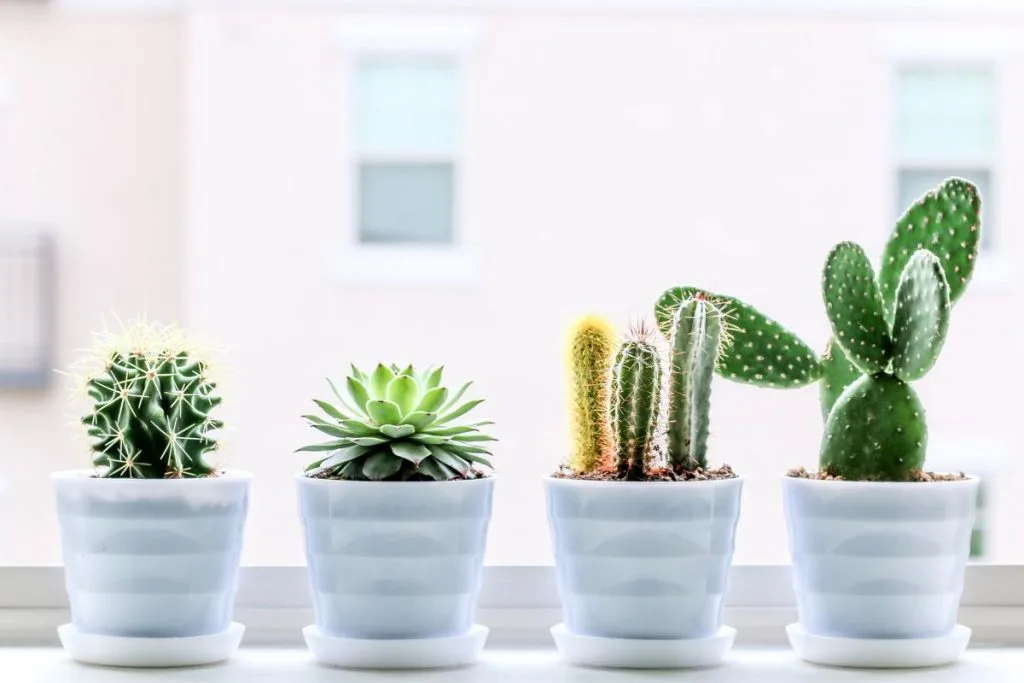
The most famous dessert plant-cactus plant can live without water for 2 whole years! Just imagine having a plant that you don’t have to water for 2 years.
It’s an amazing thing. In case you go on a trip and forget to water it, no harm done, your plant won’t even notice it.
These plants, as we all already know have their natural habitat in desserts, where the temperature can reach 105 F during the day.
Growing up in such natural conditions, they developed a great skill to store their water uniquely. We’ll say more about that below.
How Long Can Cactus Plant Live Indoor Without Water?
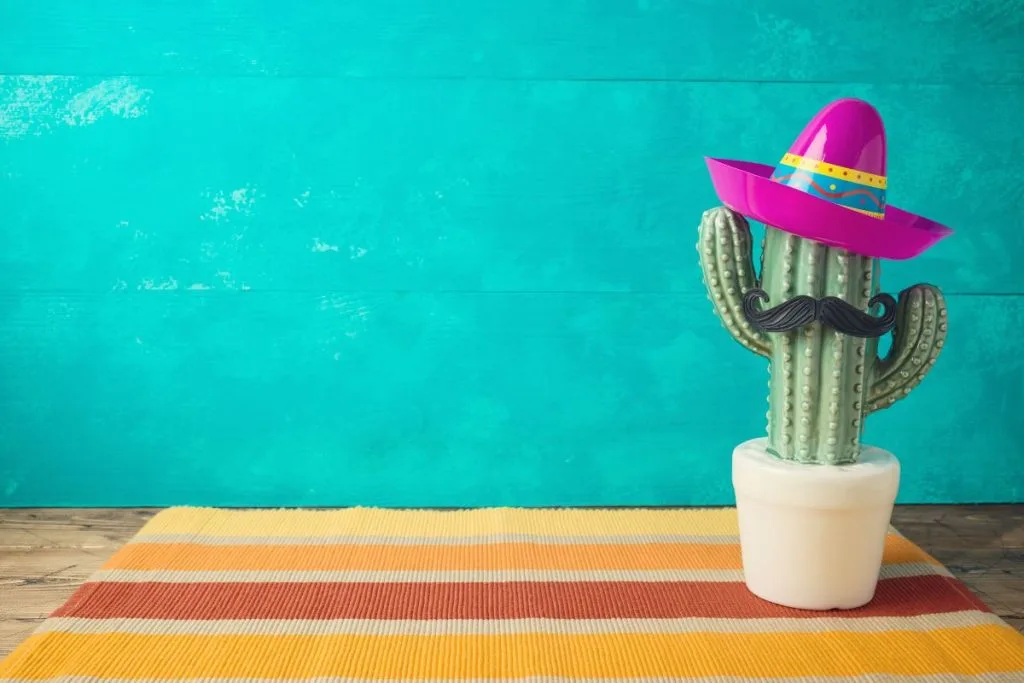
No matter what cactus species we’re talking about, the cactus plant, just like other plants that are succulents has the same life cycle both indoors and outdoors.
Indoor cacti can live up to 2 years, just like an outdoor cacti plant in a dessert. Of course, cacti survive no water regime because they usually have other conditions for their growth, besides their stored water.
They have shallow roots because they live in arid areas and roots help store water as well. Deep roots are not like that and with deep roots, storing water process can be an issue.
Shallow roots are good to prevent root rot as well. Of course, if you, however, overwater them all the time, problems can occur in such conditions too.
How Does A Cactus Live With No Water? (Thick Stems Benefits)
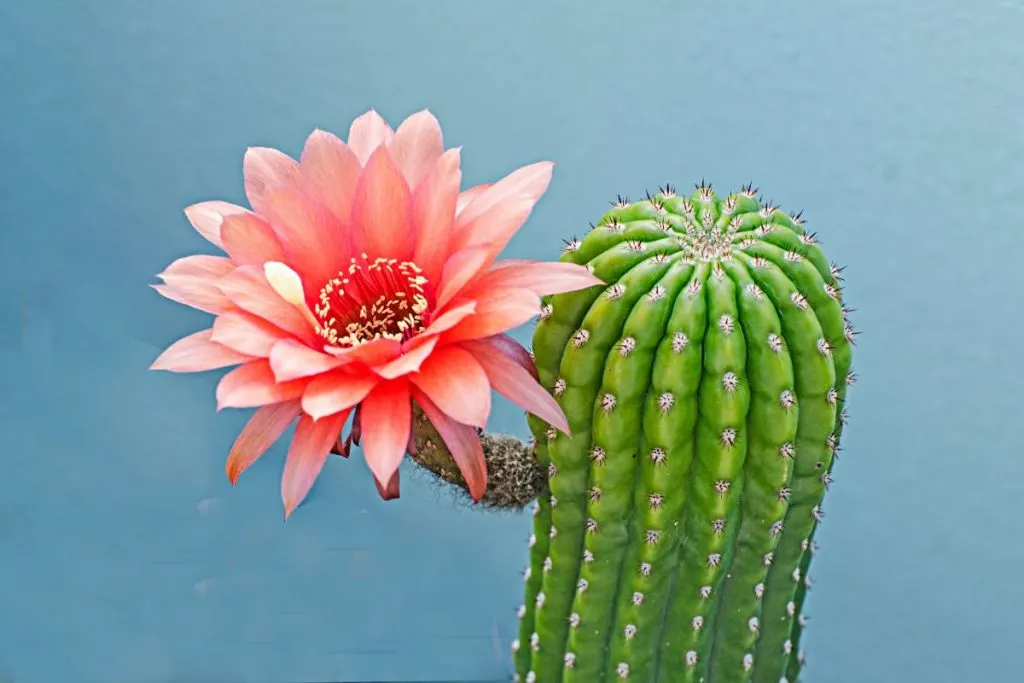
The thick stems you see on cactus plants have more space for this plant than you can imagine! Thick stems are the number one reason why these pants can store water for such a long period. Since cacti plants don’t have leaves for storage, thick stems are the ones who are doing that job.
Thick stems have a protective barrier as well, and due to them, cacti survive 2 or more years without water. Reason number two of stored water mystery are mucilage cells of this plant.
They help cacti plants retain the water process. We can conclude that this is one of the toughest plants right?
What’s The Best Habitat For Cactus Plant?
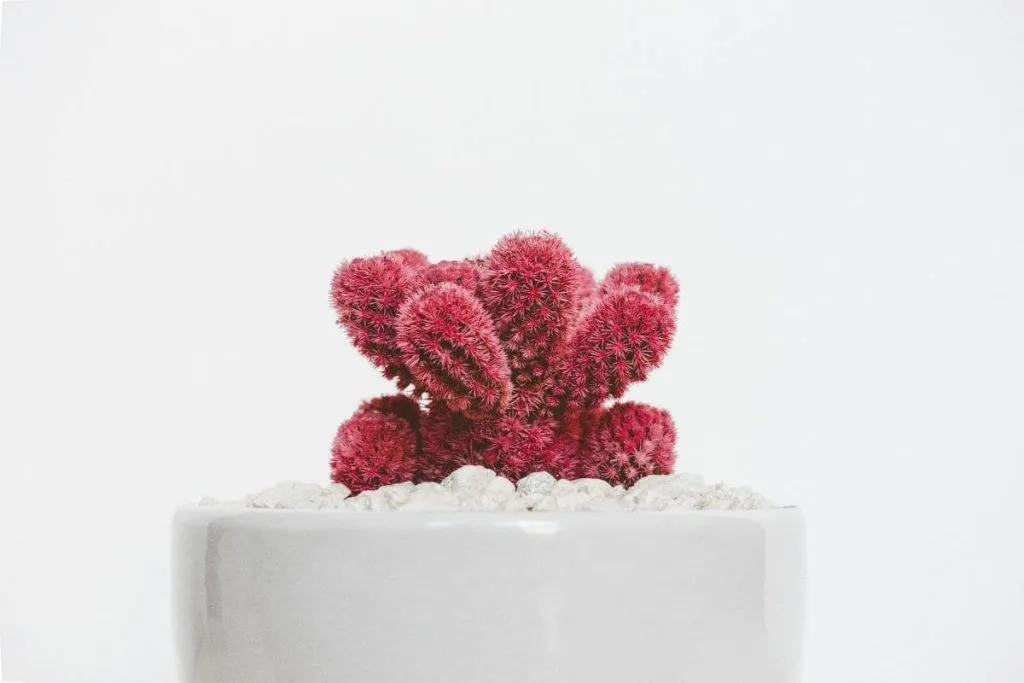
As we mentioned above, their natural habitat is the desert. Hot weather conditions are a big must for these plants.
Lots of light, hot temperatures, and low moisture are perfect growing conditions for not just cactus plants, but many other succulents.
In deserts, there are long periods with no rain, and plants are practically taking care of themselves. As we learned before, that’s not a problem for this tough succulent.
What Are The Types Of Cactus Plants?

The widest variety of cacti in Mexico, the most bizarre forms of cultivation in the Andes mountains, and a multitude of different beautiful species can be found in South America, which is considered the home of cacti.
According to their appearance, cacti are conventionally divided into Shrubs, woodpecker cactus, green cacti, and liana cacti.
Desert cacti are characterized by a special unpretentiousness and adaptability to the environment, they are endowed with strong stems and long, strong spines. These cacti are divided into three types:
- Echinopsis – have thick, round stems
- Opuntia – with leafy stems attached
- Astrophytes – have ribbed stems.
The most famous desert cactus species are saguaro, prickly pear, golden barrel cactus, and bunny ears cactus, which is also good indoor plant.
Care Guide For Indoor Varieties Of Cactus Plants And How Long Can A Cactus Go Without Water
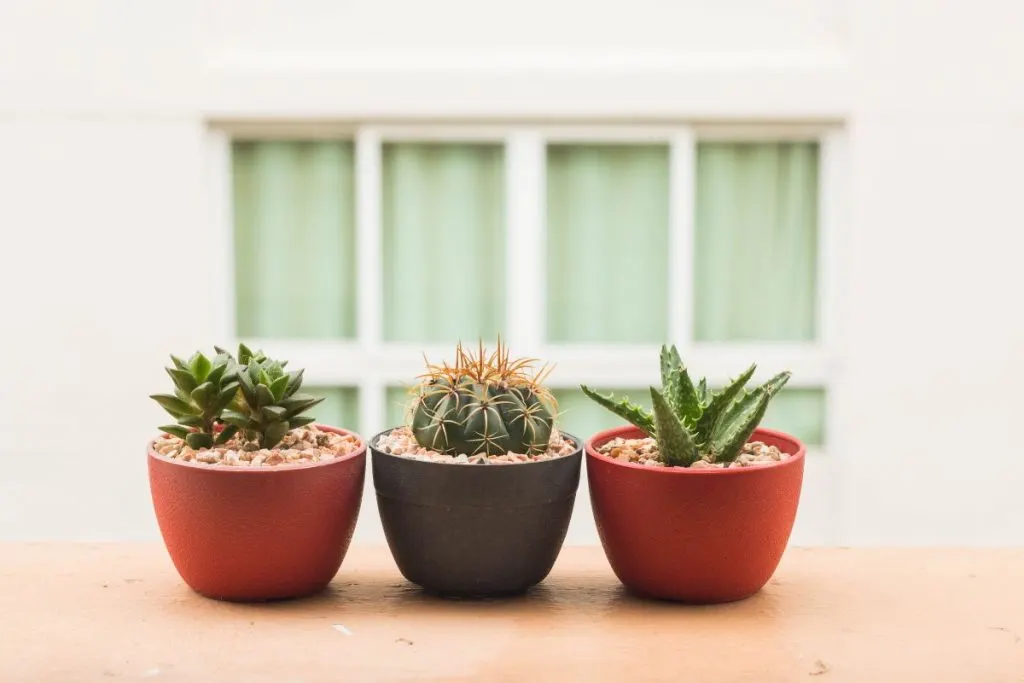
We only want what’s best for our beloved plant right? Plant lovers will do everything for their plants; right now, you’re learning a lot about them.
After you’re done with this care guide, you’ll be more than ready and skilled to take care of your little cactus or a large cactus plant. Besides stored water, there are other things to learn about cactus.
Let’s learn about other things that matter for the growth of this plant.
Is Direct Sunlight Good For Cacti Plants?
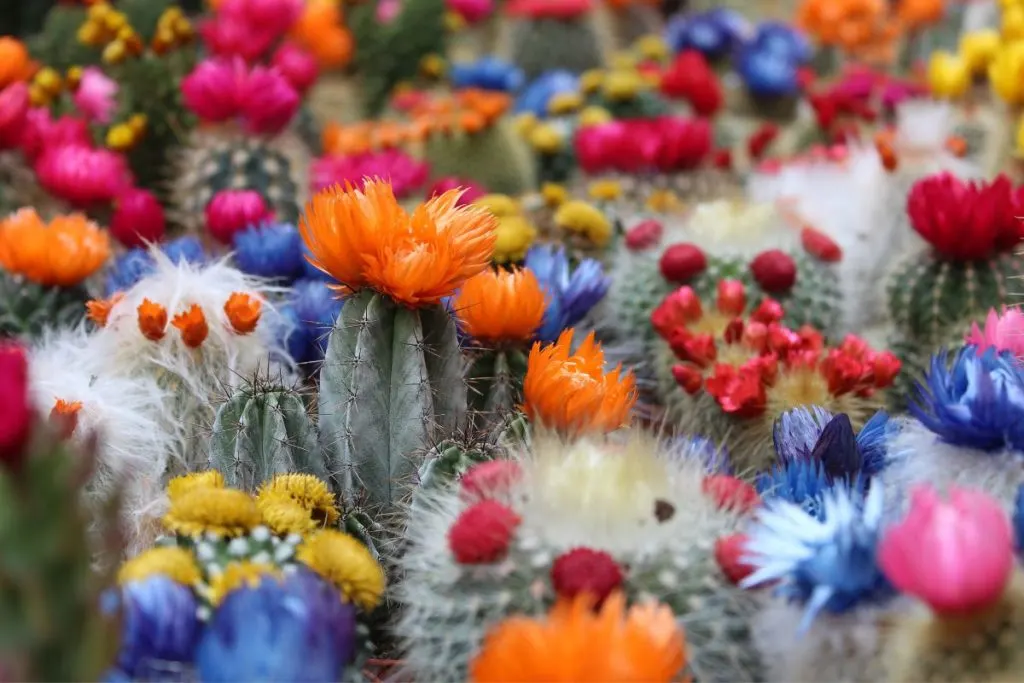
A lot of sun is more than preferable for cactus plants. Since you won’t have to water them all the time, other conditions such as perfect light are more than needed for its growth.
Shade isn’t a perfect location for these plants. Partial shade combined with the direct sun during the day is okay, just a shady location isn’t!
When you overwatered these plants, direct sun is also great for those “issues.” Since they have shallow roots and thick roots, the sun will help them dry much faster than in the shaded area.
Soil Types For Cactus
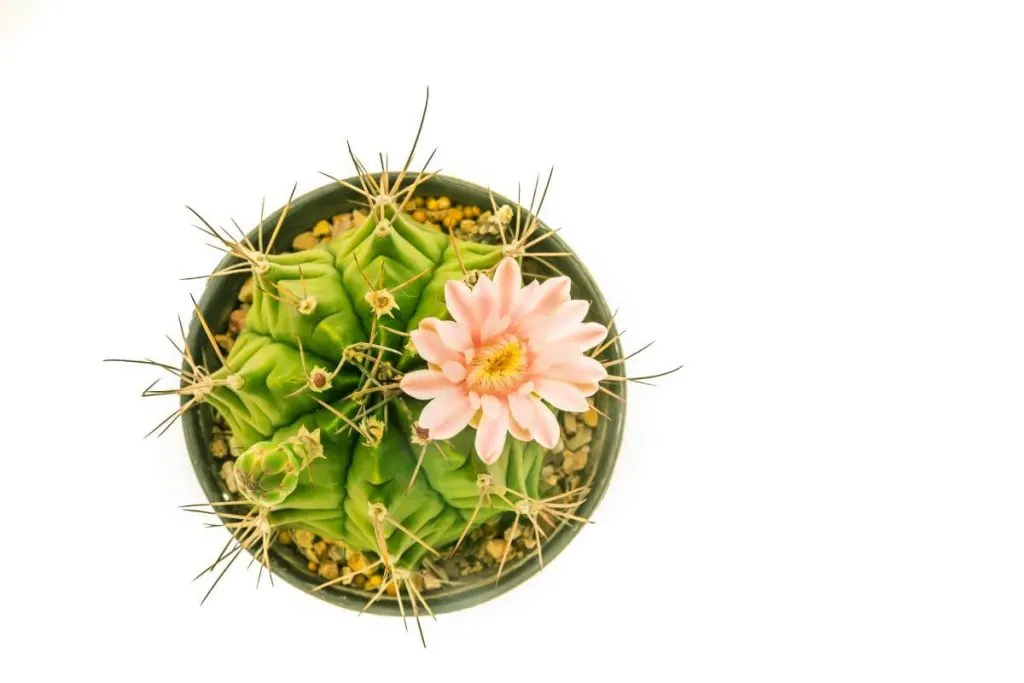
When it comes to its potting soil, potting mix is the best choice for cactus plants. Cactus is not a demanding plant when it comes to its soil for planting. Most cacti and that’s 100% of cactus plants like soil dry.
Peat moss, a little sand here and there won’t hurt or the potting mix will do its part in the growth process of this plant. What cactus does not like when it comes to soil is acidic soil. Always check the PH of the soil before buying it!
Watering Regime For Cactus Plant And How Long Can A Cactus Go Without Water
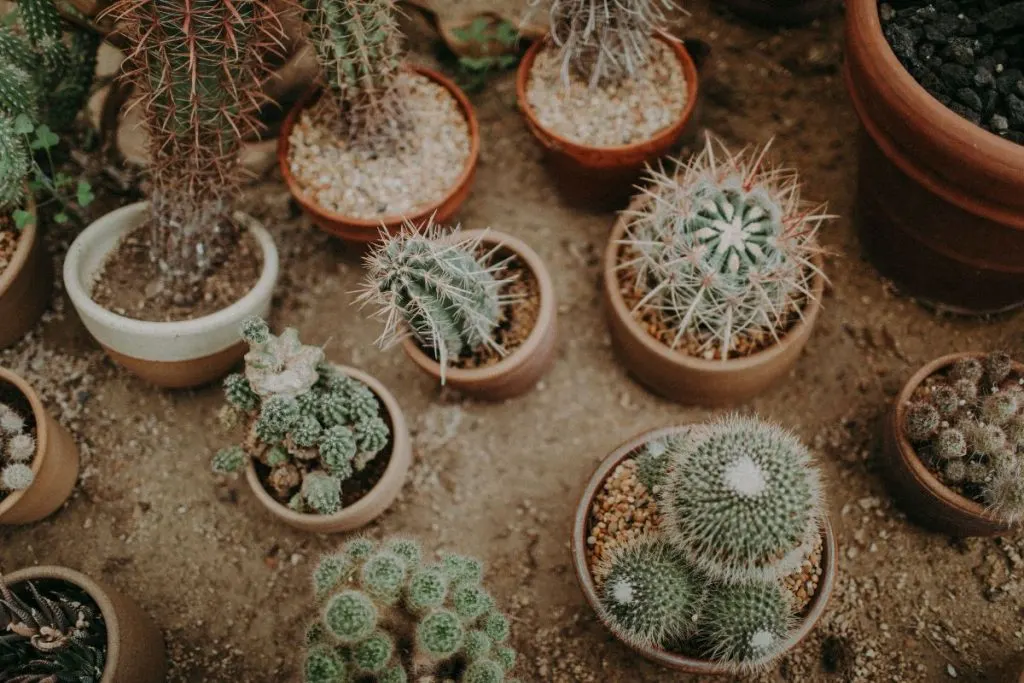
Dry soil alert! Do not worry about it. We are not talking about most plants you’re used to here. Many plants that you probably have in your home now need watering every 8-10 days, or even 5 days, but a cactus plant can be watered once a month, just to keep it in its best shinny shape.
Underwatered cactus be a problem after a year passes, two eventually, before that you have nothing to worry about.
Well, maybe just one thing. Some people still prefer to water their cactus plants more than they should. And that can cause a problem we’ll discuss in detail below.
Overwatered Cactus – Frequent Watering Problems
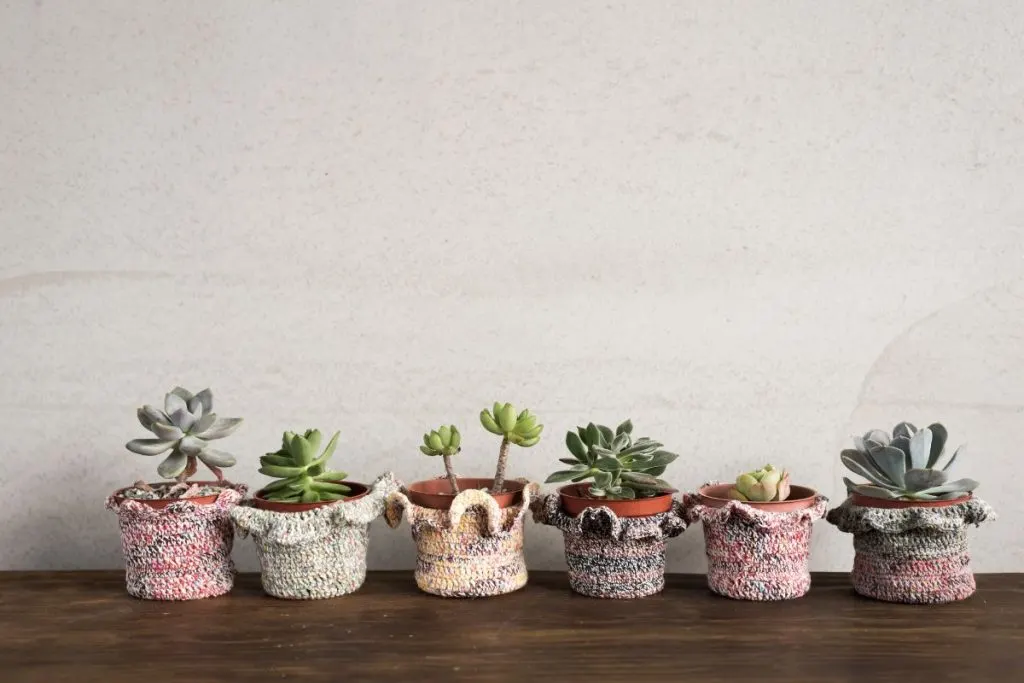
The Cactus root system is its great benefit and its problem at the same time. Due to water storage, it’s great to have a shallow root system, but when it comes to watering, water will reach roots much faster and that can cause this problem.
During this period, your cactus might turn pale and you’ll be able to conclude this problem based on that. Once you overwater your cactus, your root will immediately react.
If you overdid it, it can lead to root rot, fungal diseases because of excessive water in roots, and many other problems. Avoid overwatering and keep your cactus roots healthy
Toothpick Test For Watering Schedule
Did you hear about this test before? It can be done with food as well, not just plants. The test is done like this: put a finger in your cactus soil, and if the soil sticks to the finger that is a big firm no for watering.
It means the soil is still wet and it doesn’t need watering anytime soon. When you do it again, and you notice that the soil is dry (top few inches) and it doesn’t stick, you may water your cacti plant a bit.
Humidity And Temperature For Cactus Plants

Dry air during winter times won’t be a problem. Since most homes use a heater in the wintertime, you don’t have to worry, the heater won’t kill your plant.
Humidity should, however, be medium. Better safe than cure, so you might place it somewhere not so near to the heater.
When it comes to the temperatures needs, it can stand temperatures between 90 F and below 20 F. As we said, this plant is very tough and it is easily adjustable to its living conditions.
Fertilizer Needs For Cactus Plants
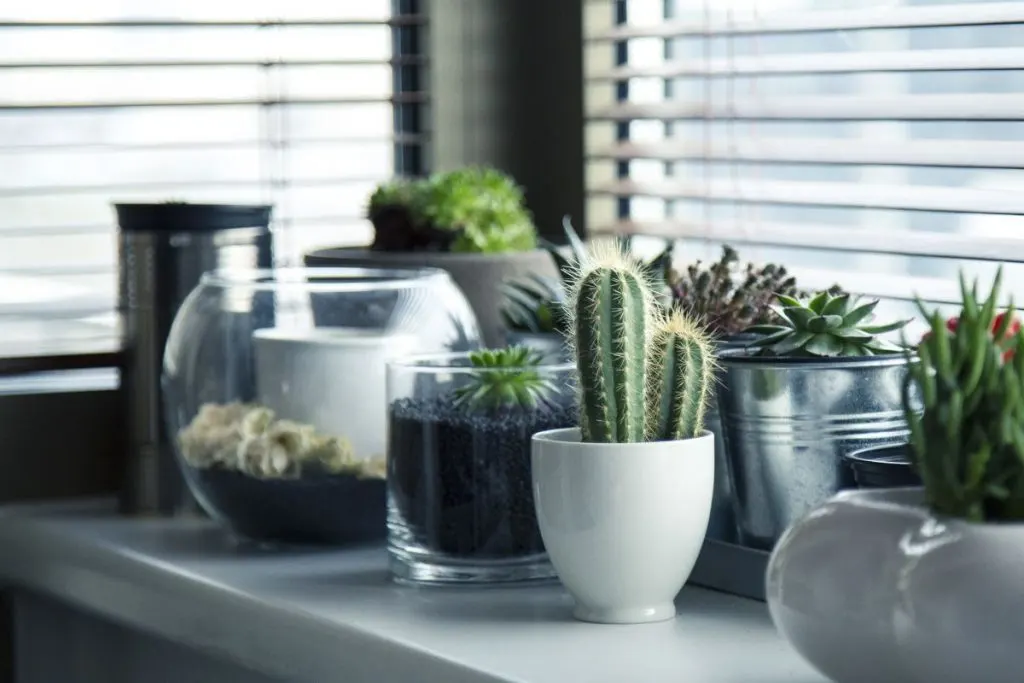
Cactus fertilizer needs are very simple. Your fertilizer for the cactus plant should be high in phosphorus, ower in nitrogen, and that’s all you have to pay attention to!
However, this succulent plant doesn’t like liquid fertilizer. Avoid liquid fertilizer with cacti plants!
The best time for fertilizing cacti plants is in early spring. In its active growing time, you can feed it for 6 months now and then, but be careful because overfeeding might be an issue.
Propagating Cacti Plants
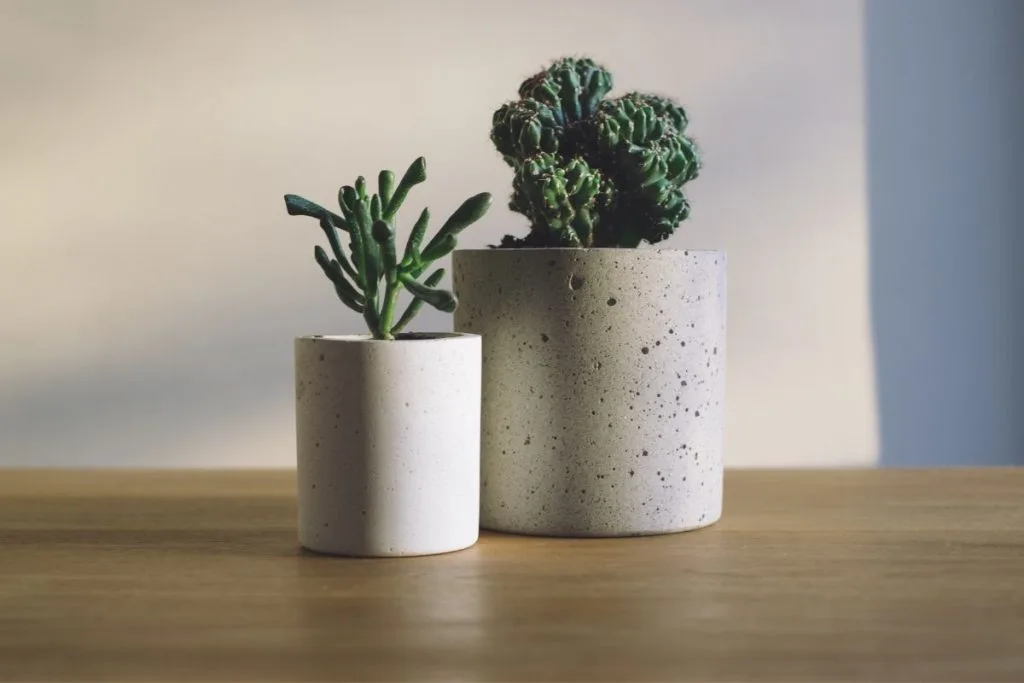
The best and easiest way to propagate cactus species is from the stem cuttings. For this, you’ll need a sharp knife, even though sharp scissors are more recommendable because of their thorns.
Once you cut the stems, place them into a new pot with prepared soil and wait. Soon enough, if you placed it in the right location with enough sun and light, you’ll see new roots.
Wintering Cactus Plants
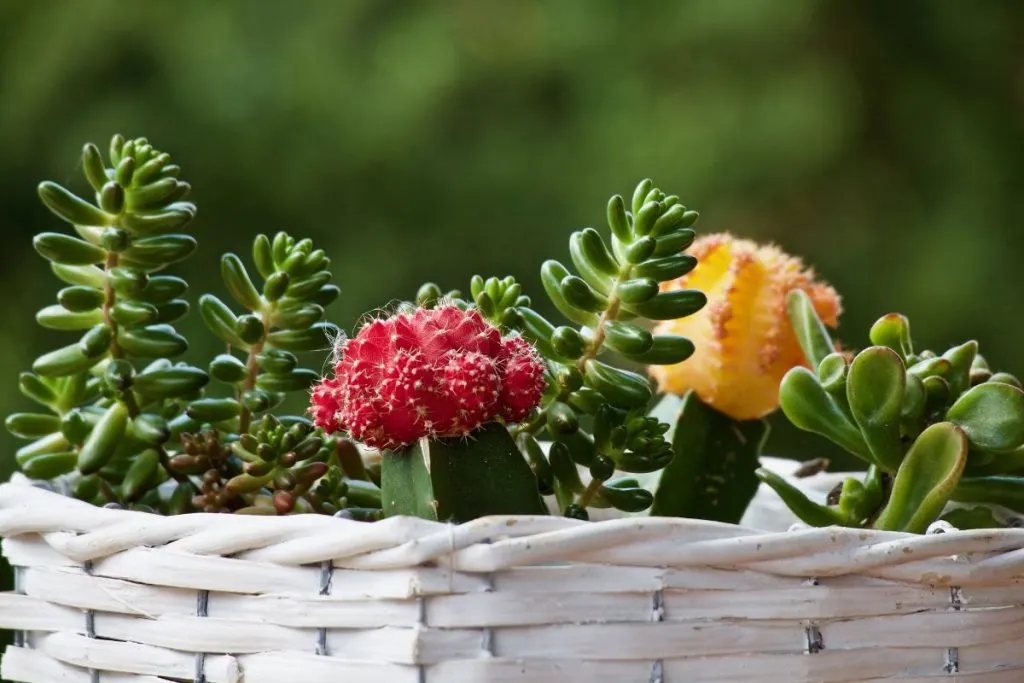
Cactus live without water in the wintertime as well. Completely dry soil won’t be an issue in the winter months.
What you need to do for your cactus in the winter months is to provide it with dry air, avoid feeding for longer periods in winter time and that would be all.
Winter time is a dry season for most plants, but it won’t do any harm to the cactus. In wintertime, it’s okay for a temperature to drop below 20 F.
If you buy this plant in the wintertime, check its hardiness zone because that may affect its care a lot!
If you have it on your porch or a balcony during the winter months, cover it with row covers or tents. Freezing however isn’t something you can control and it might harm your plant.
FAQ And How Long Can A Cactus Go Without Water
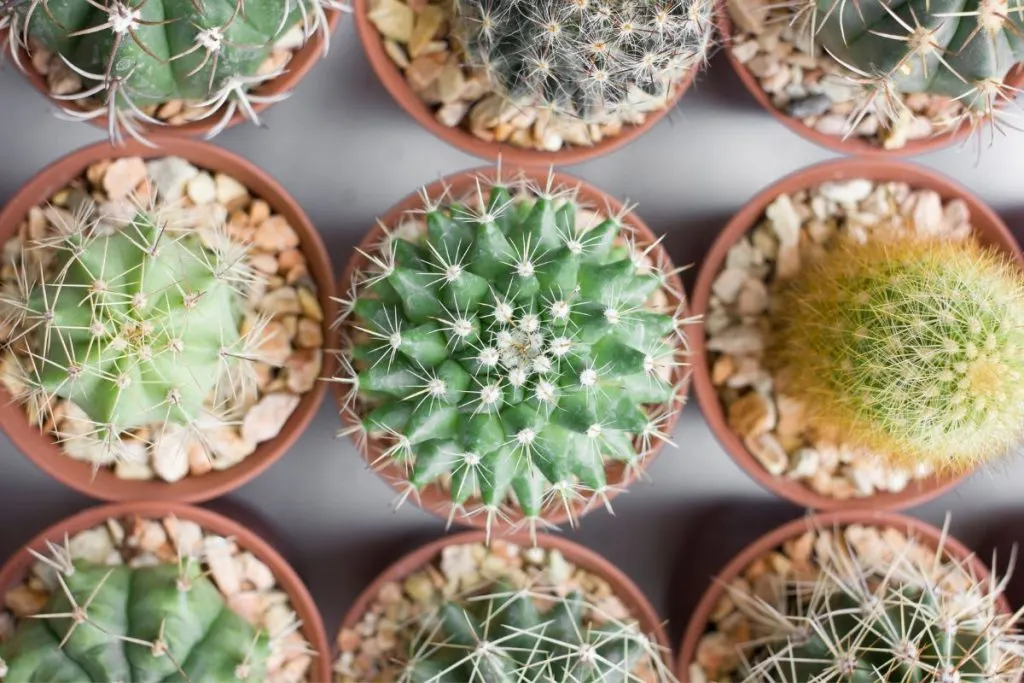
To make sure we answered all of your questions, this faq section will wrap your entire picture about cactus plants.
Even though we described their care guide, there are still some unanswered questions hanging in the air. Let’s learn some interesting facts about cactus plants then.
What Spines Serve For On The Cacti Plant?
Water retention and protecting these plants from animals in the desert are the main benefits of cactus spines.
As we already know, for storage of water they do a good job and let’s be honest, I’m sure you can’t remember the last time you saw a damaged cactus.
Spines keep the animals away. They have that special protective layer with their spines on stems.
Can You Drink Cactus Water?
You probably asked yourself this question way too many times if you own a cactus in your home.
Chemicals that cactus plants have in their thorns are way too acrid for humans, so it is better and recommendable not to drink their water. However, this isn’t the same as accidentally getting stabbed on its thorn. It won’t do any harm except it might hurt for a bit.
Is Cactus A Toxic Plant?
Cactus isn’t a toxic plant and you can keep them in your room with your pets and babies. Of course, you need to be cautious for other well-known reasons.
These plants are not poisonous and you don’t have to fear them. However, cactus-like Cholla might be dangerous if inhaled too deeply, or if they get into your tissue too deep. Cholla can cause bleeding and bruising.
What Are The Cactus Plant Benefits
Even though there are some dangerous species, some cactuses have their benefits as well. Some of those benefits are:
- they protect nerve cells
- they are antiviral
- they regulate blood pressure
- they reduce cholesterol
- (you might love this one) -they eliminate hangovers and much more.
History Of Cactus Plants
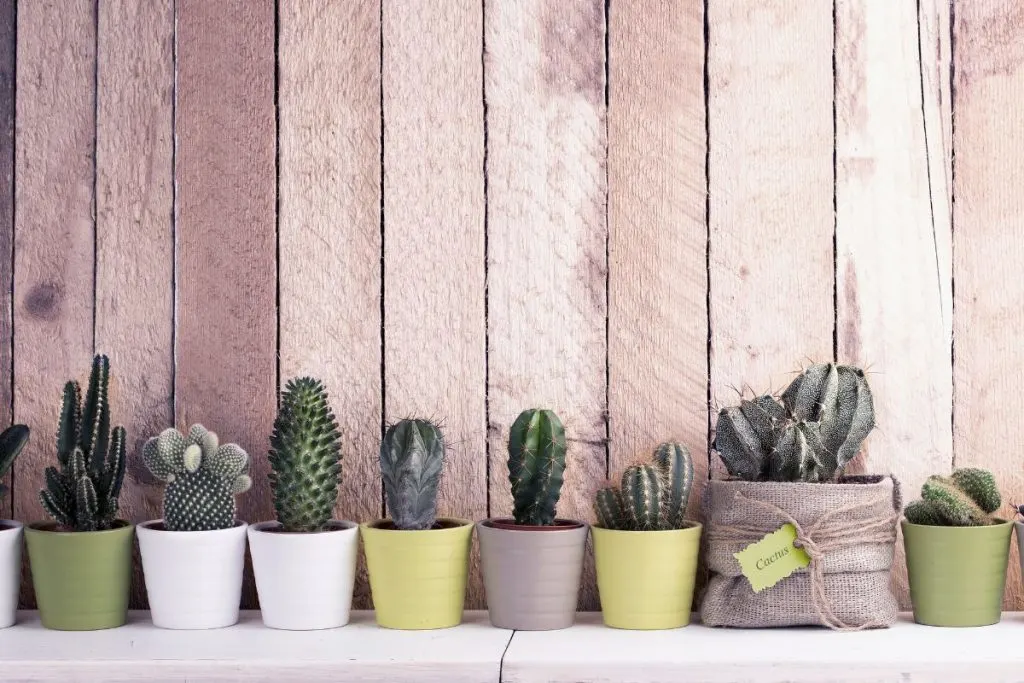
Europeans saw cacti for the first time at the time of the discovery of Columbus, and with them also several other works of the American continent. For about 40 years, cacti were a nameless curiosity of the New World, and only in 1535 did they receive the first descriptions and prickly pears.
The origin of the cactus remains a mystery to this day. Neither the course of changes in the shape of the stems nor the appearance of the vegetative organ, the areole, which is absent in other plants, is known.
Here the researchers were faced with the fact that no cactus is a fossil. The most primitive genus Pereskia has leafy branches, and belongs in all respects to the family Cactaceae, but does not indicate origin. Only guesses and theories based on comparative analysis remain.
Final Thought On How Long Can A Cactus Go Without Water
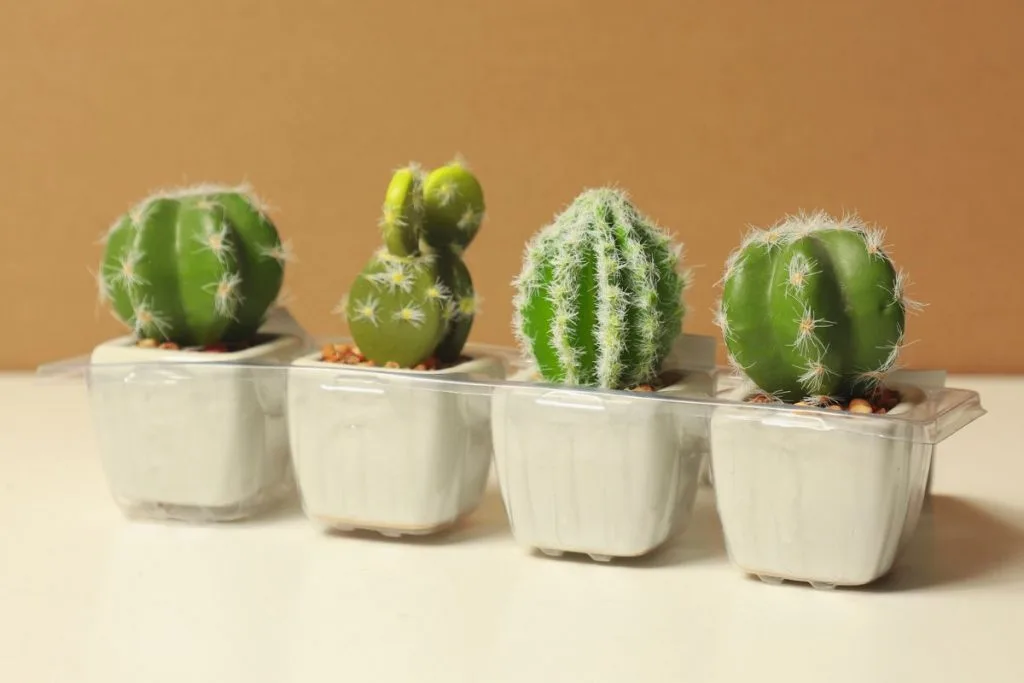
We’ve come to the end of another article and that’s where we’re leaving for today. I hope that you have learned everything about cacti, and most importantly, that you now know how long can a cactus go without water.
As you could see, these plants are not demanding at all and are ideal as plants for beginners in the world of flowers and plants.
This plant is particularly good in student dormitories, we all know for sure that students often forget about their plants in addition to their overwhelming obligations. With a cactus, you won’t have this problem, and your student room will look richer.
That would be it for today my dears! See you soon!

